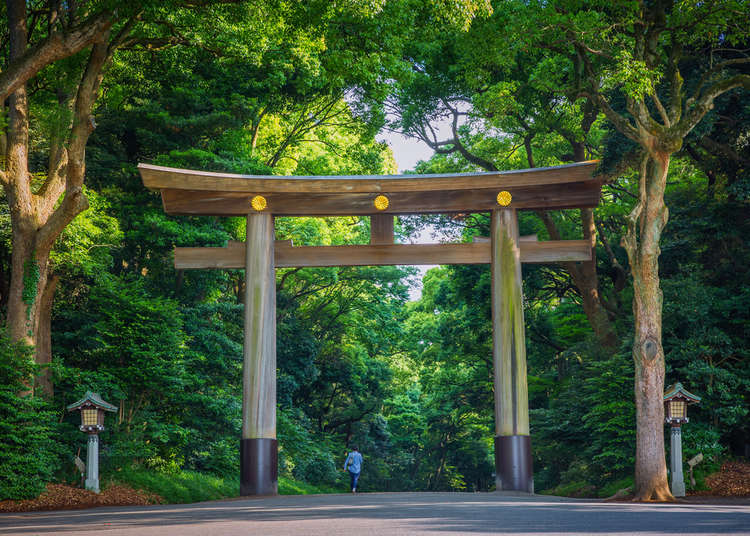
Amidst the rapid rhythm and neon lights of modern Tokyo, there lies a serene oasis that stands as a testament to Japan's profound history and reverence for nature: the Meiji Shrine, or Meiji Jingu, as it's locally known.
Nestled within a verdant forest that seems almost out of place in the urban sprawl, this Shinto shrine isn't just a monument to Emperor Meiji and Empress Shoken, but also to the harmonious blend of the old and the new that defines Japan's identity. As skyscrapers tower in the distance, visitors find themselves transported to a realm where tradition, spirituality, and nature intertwine.
This guide seeks to illuminate the rich history and cultural significance of Meiji Jingu, offering travelers an insight into one of Tokyo's most cherished landmarks.
Exploring Meiji Shrine in Tokyo
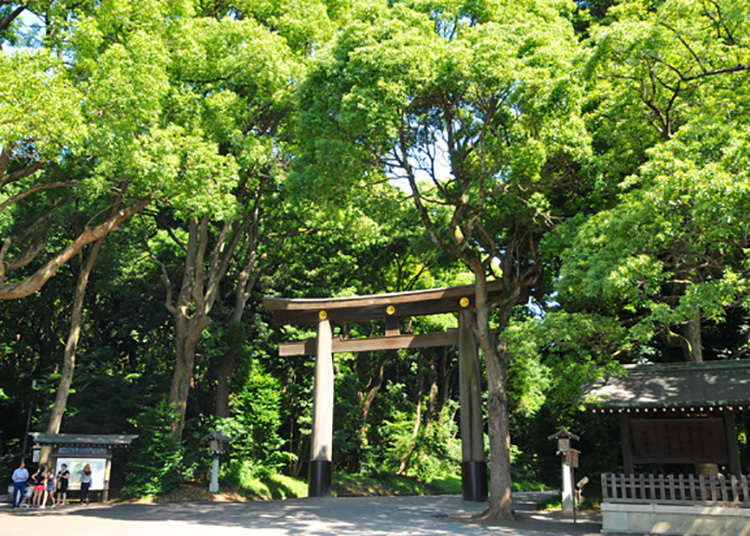
Meiji Shrine stands as a sacred haven, erected in 1920, dedicated to the memory of Emperor Meiji and Empress Dowager Shoken. Unlike its present-day serenity, history recounts that this hallowed ground was once a wilderness during its construction.
Around 100,000 trees, graciously contributed from every corner of Japan, were planted, crafting a chinju-no-mori—a protective forest encircling Shinto shrines.
Embarking from Harajuku Station towards Meiji Shrine, the first sight that greets you is the initial torii, a gateway marking the entrance. The main shrine lies just a brief stroll away. As you stand before the torii, a humble bow sets the tone before you step into the heart of this sacred expanse.
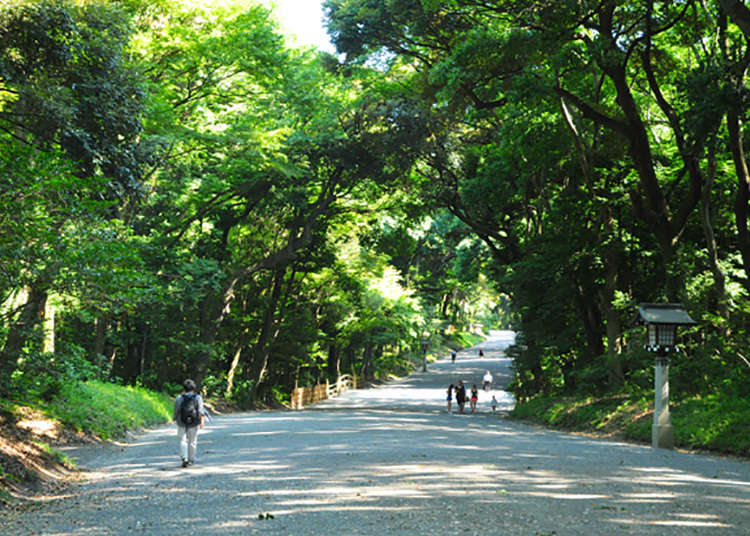
A step inside the sacred place naturally pulls one's mind together. The path slopes gently downhill. It is said it was designed as a downward slope to enable visitors to comfortably worship at the shrine.
Upon stepping forward firmly on the gravel, the air will feel nice and cool. The sound of the gravel being stepped on is said to have a purifying effect on visitors, and just by walking along making gentle sounds, the pleasant crunching brings peace to one's mind as well.

What comes into view next is the sake barrels and the wine barrels. Emperor Meiji is said to have had a taste for wine, especially the ones made in Burgundy. The barrels stacked in rows are an intriguing sight.
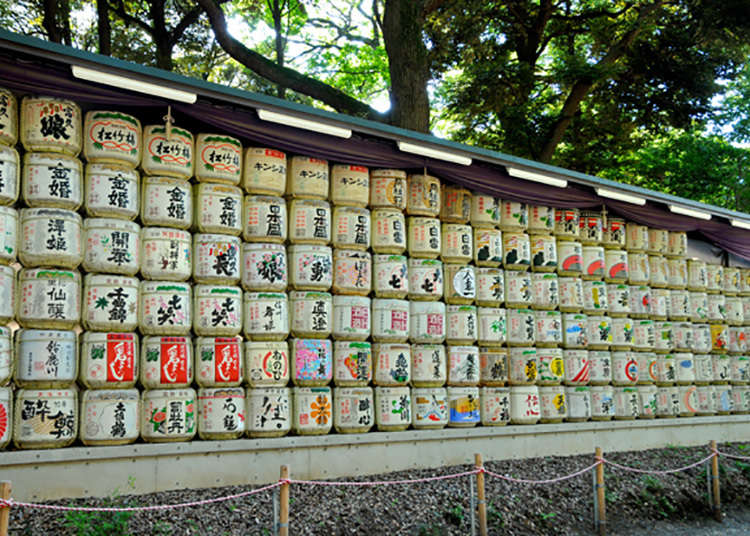
Here are the Japanese sake barrels. If you have an eye for wine and sake, try looking at the caskets and distinguish the different brands from one another.

Ahead, the o-torii (great torii) appears on the left and is the largest wooden Myojin-style torii in Japan. One pillar is said to have been made from a single entire Taiwan cypress tree.
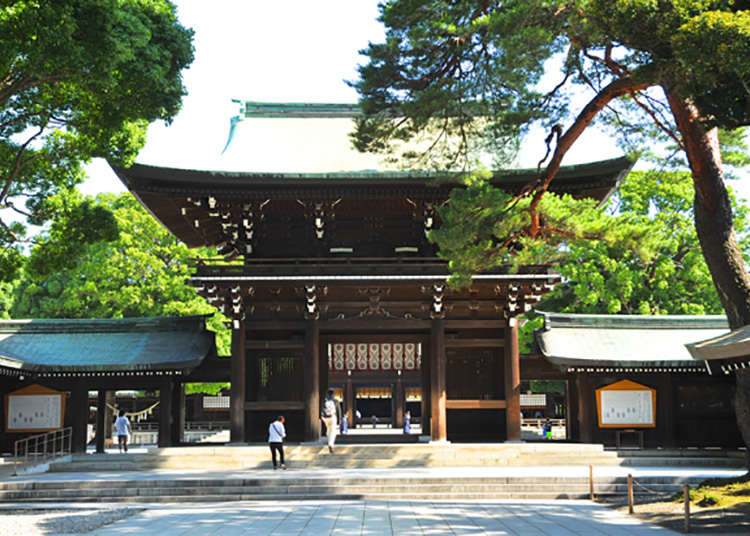
Upon passing through the great torii, you will finally arrive at the main shrine building. From here it is an especially sacred place.
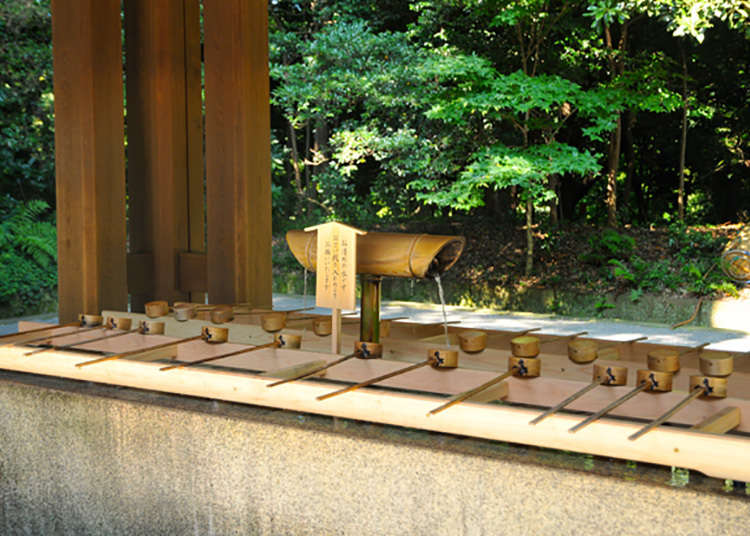
Before you begin your respectful journey, a moment of purification awaits through temizu, a ceremonial ritual with sacred Shinto water.
To commence, grasp a hishaku (ladle) with your right hand, gently scooping the water. Start by cleansing your left hand, allowing the water's cool touch to symbolically purify. With the ladle now in your left hand, your right hand undergoes the same cleansing ritual.
Proceeding, transfer the ladle back to your right hand and let a small stream of water cascade onto your cupped left palm. This water, revered for its spiritual essence, is then used to cleanse your mouth, a symbolic gesture of inner purification.
As the final step of this age-old ritual, as you conclude the rinsing of your mouth, let the remaining water flow down the ladle's handle. Return the ladle gracefully to its initial resting place, marking the completion of your temizu purification.

Put some coins into the donation box, then comes the time for "2 bows 2 claps 1 bow". Bow twice, clap your hands twice, and then after you've made a wish, bow once at the end. It is better to practice beforehand in order to perform it smoothly.
The Enchanting Meiji Jingu Inner Garden (Meiji Jingu Gyoen)
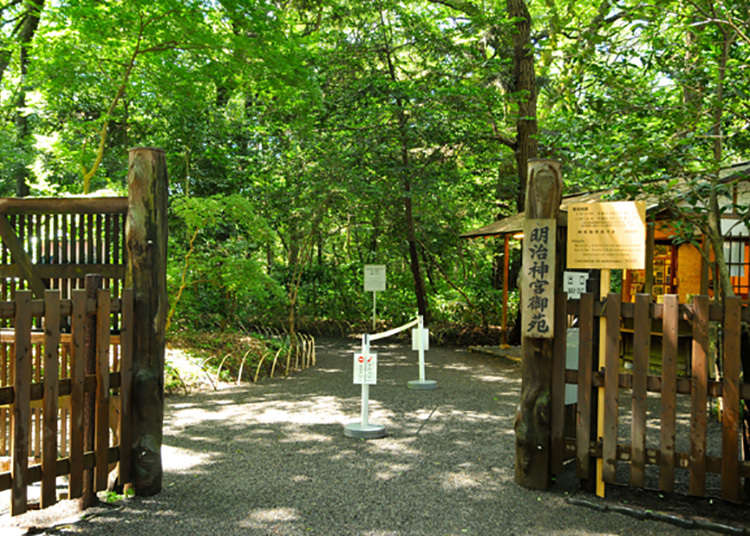
After your visit to the shrine is complete, we go to the Meiji Jingu Inner Garden. According to the description, this imperial garden used to be the garden of a shimo-yashiki (a villa located outside of central Edo) owned by the Kato clan and the Ii clan since the early Edo period.
However, It fell under the jurisdiction of the Ministry of the Imperial Household in the Meiji period and it appears it was given the name Yoyogi Gyoen. Currently, it is called Meiji Jingu Gyoen.
This place has been a garden since long ago, but in the Meiji period, it was maintained by Emperor Meiji for Empress Shoken to be able to take walks. It is a place that gives off an impression of native thickets, and even the atmosphere of the path is a little different from others, with its natural trees which will welcome you refreshingly.

We've found Kiyomasa-no-Ido (Kiyomasa's well), which became famous through Japanese TV! You can touch the pure spring.
With a constant temperature hovering around 15 degrees Celsius, the well's refreshing flow of 60 liters per minute offers a gentle caress that remains unchanged through the seasons. The coolness is as invigorating as it is soothing—a tactile invitation to connect with nature's purity.
Legend has it that this well harbors not only water but also whispers of good fortune. However, tradition interdicts the tossing of coins into its depths, for to do so would besmirch the clarity of the water.
Approach with reverence, for Kiyomasa's well is a living testament to the delicate balance between human presence and the sanctity of nature's offerings.

Walking the path of thickly grown trees, the view suddenly opens and the shobuta (Japanese iris field) appears.
Here is the place where Emperor Meiji had irises planted for Empress Shoken. The irises start to blossom in June, which naturally is the best time to see the various species of colorful irises in full bloom.
During this time, it is said to create such a beautiful scene that people forget that they're in the middle of Harajuku and Shibuya.

At the lake in the imperial garden, there are of course koi, but depending on the season, wild birds such as mallards, mandarin ducks, and meadow buntings can be found as well. In the summer, beautifully blooming sacred lotus flowers can be seen.

Around the time you reach the front of the Treasure Museum, our field of vision opens, and a spacious lawn!
The skyscrapers of Shinjuku stretch out towards the vast sky in the background. When you get tired of walking, enter the shade of a tree and take a short break there.
Feel the refreshing wind while resting on the lawn, and perhaps the power of chinji-no-mori will swell within you!
By the way, it should be noted that including this place, eating and drinking inside the shrine is not allowed, except for some specified locations.
Meiji Jingu Treasure Museum
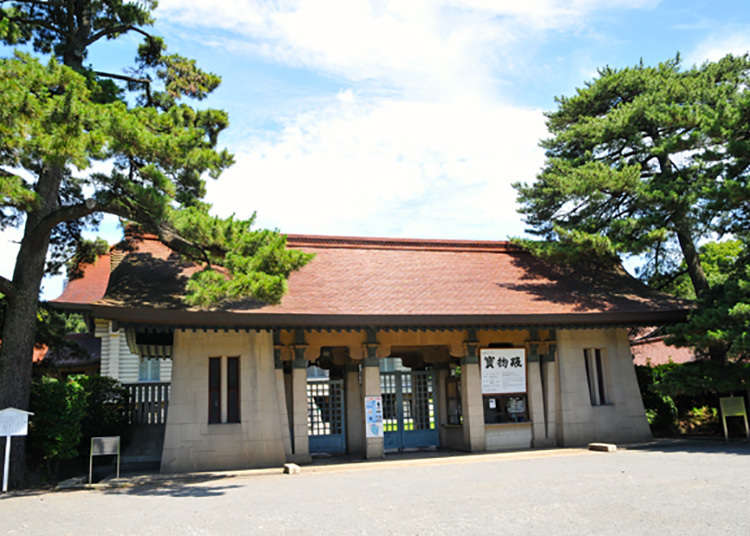
We've arrived at the entrance of the Treasure Museum. Inside, the portraits of Emperor Meiji and Empress Shoken are on display. Various items with deep connections to both deities of the shrine are exhibited as well.

In front of the Treasure Museum also stands the Sazare-Ishi, pebbles which grew into a large rock over time.
This image also appears in Japan's national anthem, Kimigayo:
Thousands of years of happy reign be thine;
Rule on, my lord, until what are pebbles now
By ages united to mighty rocks shall grow
Whose venerable sides the moss doth line.
It was dedicated to Meiji Shrine from its original place in Gifu.
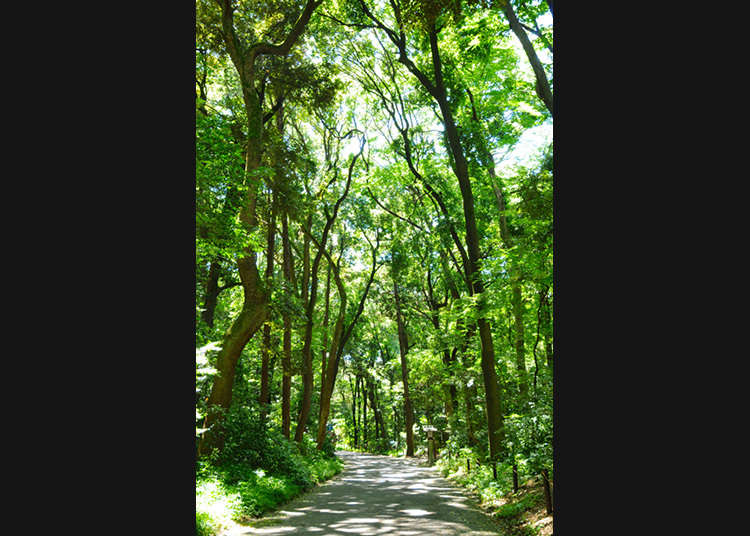
The way back towards Harajuku is surrounded by tall overgrown trees which make for a cool, refreshing path. Although the sun is already high, the tree leaves moderately block the sunlight and cast beautiful shadows over the forest.
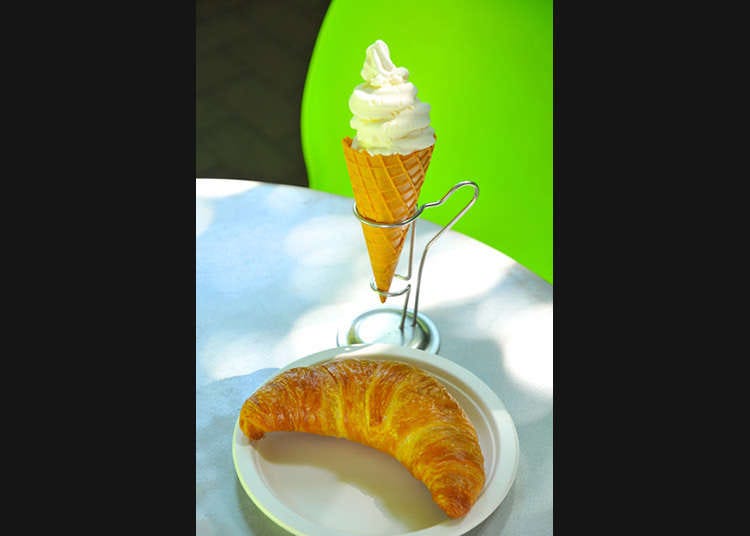
After a fulfilling walk of the grounds, its time to go back to the entrance to have tea time at the cafe, Mori no Terrace. In warm seasons, relaxing on the open terrace with its carefree atmosphere is recommended. Menu items such as tofu-milk ice cream and croissants are popular at the cafe. After satisfying your appetite and quenching your thirst, remind yourself of the sights you saw or things you felt while walking. There must have been a variety of discoveries and surprises.
-

-
Address
1-1, Yoyogikamizonocho, Shibuya-ku, Tokyo, 151-8557
View Map -
Nearest Station
Sangubashi Station (Odakyu Odawara Line)
- Phone Number 03-3379-5511
-
Address
1-1, Yoyogikamizonocho, Shibuya-ku, Tokyo, 151-8557
*Prices and options mentioned are subject to change.
*Unless stated otherwise, all prices include tax.
Popular Tours & Activitiess
Recommended places for you
-

Enjoy Japan's Gorgeous Winter Lights! Ride the Romancecar to Shonan no Hoseki Illumination
by: Guest Contributor
-

See Asakusa and Tokyo Skytree® in a New Light at the "Také Akari" Festival (Winter 2025-2026)
by: Guest Contributor
-

2025 Japan Autumn Color Report: Tokyo's Ginkgo Trees Starting to Glow
by: Timothy Sullivan
-
Ad

Walk in the Footsteps of Believers: A 4-Day Pilgrimage Across Goto Islands, Nagasaki Prefecture
by: Yohei Kato
-

A Travel Game Changer! Go Hands-Free Between Tokyo and Kyoto with LUGGAGE EXPRESS by JTB and JR Tokai
by: Guest Contributor
-

Don't Miss Out! The One Thing You Must Do Before Shopping at Mitsui Shopping Park LaLaport: Get Your Max 10% OFF Coupon Book
Inspiration for Accommodations
-

Enjoy Mt. Fuji from the Comfort of Your Room! Recommended Ryokan with Mt. Fuji View
-

Stay Near the Cherry Blossoms! Hotels for Cherry Blossom Viewing in Tokyo
-

Family-Friendly Hotels with Free Shuttle to Disneyland: Convenient Access for a Magical Stay
-

Top Ranked Hakone Hotels with Mt. Fuji View: Enjoy Stunning Scenery from Your Private Space
-

Convenient Tokyo Hotels with Airport Shuttle: Ideal for Families and Heavy Luggage
-

Stunning Tokyo Tower View Hotels: Enjoy Spectacular Scenery from Your Private Space
-

Convenient Asakusa Hotels with Kitchens: Ideal for Extended Family Visits
-

Experience Luxury: Hakone's 10 Best Five-Star Accommodations
-

Enjoy Mt. Fuji Autumn Leaves! Top Hotels Near the Popular Autumn Leaves Corridor
-

Experience Hakone Fall Foliage from Your Room with Stunning Views
-

Tokyo Roppongi|Roppongi Station Area Map & Sightseeing Information
-

Exploring Tokyo: 4 Must-Visit Spots around Tokyo Station
-

Hatsumode in Tokyo: 5 Recommended Places to Enjoy Japan's New Year
-

Japan's Bath Culture: Tips You Should Know!
-

Strolling through Japanese Culture: 10 Gorgeous Shrines in Tokyo
-

Tokyo Fuku Meguri – Tokyo Jinja Good Luck Tour
- #best ramen tokyo
- #what to buy in ameyoko
- #what to bring to japan
- #new years in tokyo
- #best izakaya shinjuku
- #things to do tokyo
- #japanese nail trends
- #what to do in odaiba
- #onsen tattoo friendly tokyo
- #daiso
- #best sushi ginza
- #japanese convenience store snacks
- #best yakiniku shibuya
- #japanese fashion culture
- #best japanese soft drinks






















